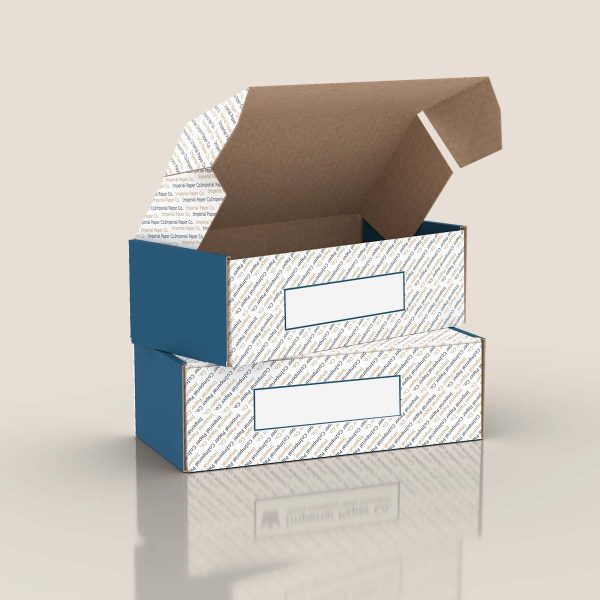The e-commerce boom has brought undeniable convenience to consumers, but it’s also generated a significant environmental burden. Plastic packaging, a mainstay in the industry, often ends up in landfills for centuries, raising concerns about pollution and waste. Thankfully, a sustainable alternative is rising to the challenge: paper mailer boxes.
Beyond Green: The Advantages of Paper Mailer Boxes
Paper mailer boxes offer a compelling combination of eco-friendliness and practicality that’s revolutionizing the shipping industry. Here’s a breakdown of their key benefits:
Reduced Environmental Footprint: Paper is a renewable resource, and paper mailer boxes are often made from recycled content or even rapidly renewable materials like bamboo. This significantly reduces the environmental impact compared to traditional plastic packaging.
Biodegradability: The beauty of paper lies in its ability to decompose naturally. Paper mailer boxes break down over time, minimizing landfill waste and contributing to a healthier planet.
Versatility for Diverse Products: From clothing and books to delicate artwork and small electronics, paper mailer boxes come in a wide range of sizes and styles to accommodate various product needs. Their sturdiness can be adjusted by choosing different thicknesses and construction methods.
Branding Potential: Gone are the days of plain brown boxes. Businesses can now customize paper mailer boxes with vibrant printing, showcasing their brand logos, colors, and even marketing messages. This transforms a simple package into a powerful marketing tool, fostering brand recognition and customer engagement.
Choosing the Right Paper Mailer Box: A Balancing Act
While the benefits are clear, selecting the right paper mailer box for your products requires careful consideration. Here are some key factors to keep in mind:
Product Protection: The primary purpose of packaging is to ensure your products arrive safely. Consider the weight, fragility, and any special needs of your products. Thicker paperboard with additional cushioning features like bubble wrap lining may be necessary for delicate items.
Size and Weight: Choose a box that snugly fits your product without being overly tight. Leaving some wiggle room prevents damage during transportation. Consider the weight of your product and choose a paperboard thickness that can handle it. Standard thickness options typically range from 200 GSM to 350 GSM, with heavier options available.
Sustainability: When it comes to eco-friendliness, look for paper mailer boxes made from a high percentage of post-consumer recycled content. Biodegradable materials like bamboo or wheat straw offer an even more sustainable option.
Branding Opportunity: Don’t underestimate the power of custom printing. A well-designed paper mailer box can elevate your brand image and create a lasting impression on your customers. Explore printing options like flexographic for large quantities, digital for smaller orders, or offset for superior image quality.
Completing the Sustainable Cycle: Beyond the Box
Paper mailer boxes are a significant step towards sustainable shipping, but there’s more you can do. Consider replacing plastic packing peanuts with biodegradable alternatives like shredded paper or crinkled recycled tissue. When using void fill, opt for minimal amounts to ensure product security without excess material waste.
Furthermore, encourage customers to reuse or recycle your packaging. Label boxes with recycling symbols and provide instructions on proper disposal. Partnering with recycling programs can further solidify your commitment to environmental responsibility.
A Sustainable Future for Shipping: The Paper Revolution
The rise of paper mailer boxes is a testament to the growing demand for eco-friendly shipping solutions. Businesses that prioritize sustainability and customer experience will find them an invaluable asset. By offering a combination of practicality, brand potential, and environmental responsibility, paper mailer boxes are paving the way for a greener future for the e-commerce industry. In turn, this shift can contribute to a healthier planet for generations to come.



